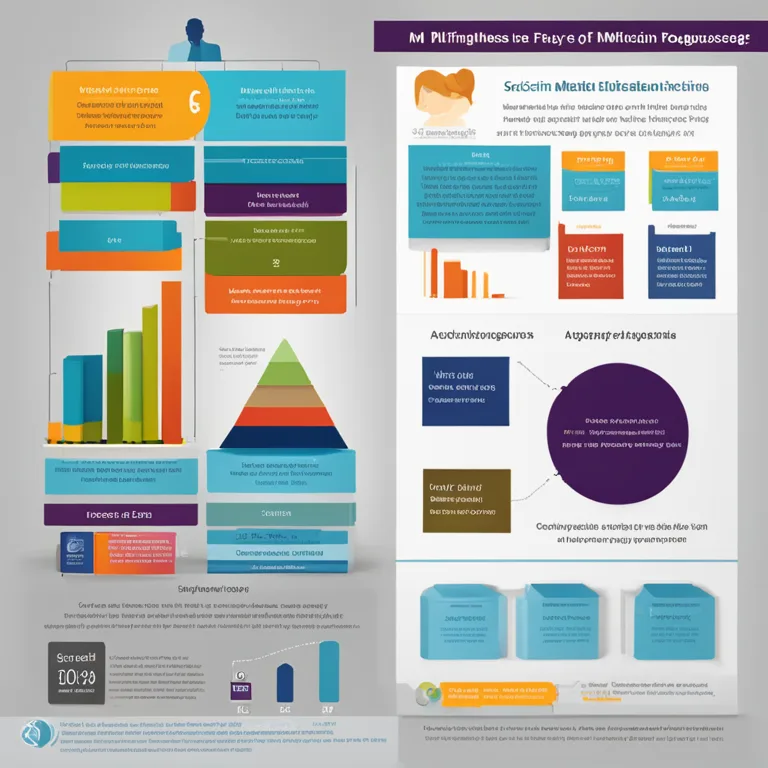
Easing Migraines Through Mindfulness Meditation
Discover how mindfulness meditation can be a powerful tool in managing and reducing migraine pain for a more peaceful life.
article by Hina Kurosawa
Mindful Meditation and Migraine Relief
Migraines are more than just headaches; they are complex neurological events often accompanied by nausea, light sensitivity, and debilitating pain. People who suffer from migraines are frequently advised to avoid certain triggers and to employ a range of medications and therapeutic techniques for relief. However, mindfulness meditation has emerged as a gentle, yet potent, ally in the battle against migraines. This practice encourages a heightened state of awareness and focused attention, which can alter the perception of pain and promote relaxation. As research delves deeper, mindfulness meditation is gaining recognition not only for its stress-reducing benefits but also for its ability to directly impact the frequency and intensity of migraines.

The Science Behind Meditation for Migraines
Recent studies have elucidated the effects of mindfulness on the brain's pain processing centers. Neuroimaging has shown that meditation can reduce activity in the brain areas responsible for pain sensation. Additionally, mindfulness may improve pain tolerance by affecting the autonomic nervous system, thus potentially decreasing the overactivation that often precedes a migraine. A 2024 study highlighted that regular mindfulness practice led to a measurable reduction in migraine days for participants as compared to those who did not meditate. Emphasizing the strength of connection between mental discipline and physical wellbeing, mindfulness meditation offers a promising complementary therapy for migraine management.

Starting Your Mindfulness Meditation Journey
For individuals seeking to incorporate mindfulness meditation into their migraine management regimen, it's important to start slowly. Committing to just a few minutes each day can make a significant impact. Sessions can begin with focusing on breathing or a specific mantra, gently steering thoughts back whenever the mind wanders. It's also crucial to create a comfortable, quiet environment to practice this meditation. As proficiency in mindfulness increases, so does one's ability to manage the pain and stress associated with migraines. The key is consistency; even if the effects are not immediately evident, regular practice can lead to long-term improvements.

Integrating Mindfulness into Your Routine
For those with hectic schedules, finding time to meditate can be daunting. However, mindfulness can be integrated into daily activities such as walking, eating, or even during short work breaks. Conscious breathing techniques can serve as mini-meditations throughout the day. When done consistently, these practices can fortify an individual's mindfulness skills, aiding in the development of a more mindful approach to life and pain management. Keeping a journal to track migraine patterns in relation to meditation practice can help in recognizing the practice's effectiveness and areas for improvement.

Mindfulness and Lifestyle: A Holistic Approach
While meditation can play a pivotal role, a holistic approach to migraine management often yields the best outcomes. Lifestyle factors such as diet, exercise, and sleep patterns can all impact migraine frequency and intensity. By mindful eating—paying close attention to the body's hunger and satiety cues and identifying potential food triggers—one can create a personalized diet that may reduce migraine occurrences. Furthermore, moderate exercise can release endorphins that act as natural painkillers, while a consistent sleep schedule supports overall brain health.
The Future of Mindfulness for Migraine Sufferers
As we look ahead, the interplay between mindfulness meditation and technology is poised to provide further advancements in migraine management. Mindfulness apps, virtual reality programs, and biofeedback devices are being developed to assist those who find traditional meditation challenging. With these innovations, guided meditations and personalized mindfulness experiences can become more accessible, providing tools that are tailored to individual needs. The pursuit of understanding the full potential of mindfulness in relation to migraine relief is an exciting frontier in both medical and psychological research.
Published: 1/8/2024
Modified: 1/8/2024
More predictions
Come back here soon to learn more about yourself and your future


Meditation's Impact on the Limbic System
Explore how meditation can positively influence your emotional and neurological well-being through its effects on the limbic system.


The Harmony of Mindful Breathing in Meditation
Delve into the symbiotic relationship between meditation, mindfulness, and breathwork to achieve inner peace and clarity.


The Harmonious Trio: Meditation, Mindfulness & Breathwork
Embark on a journey to inner peace with our guide on integrating meditation, mindfulness, and breathwork into your daily life.